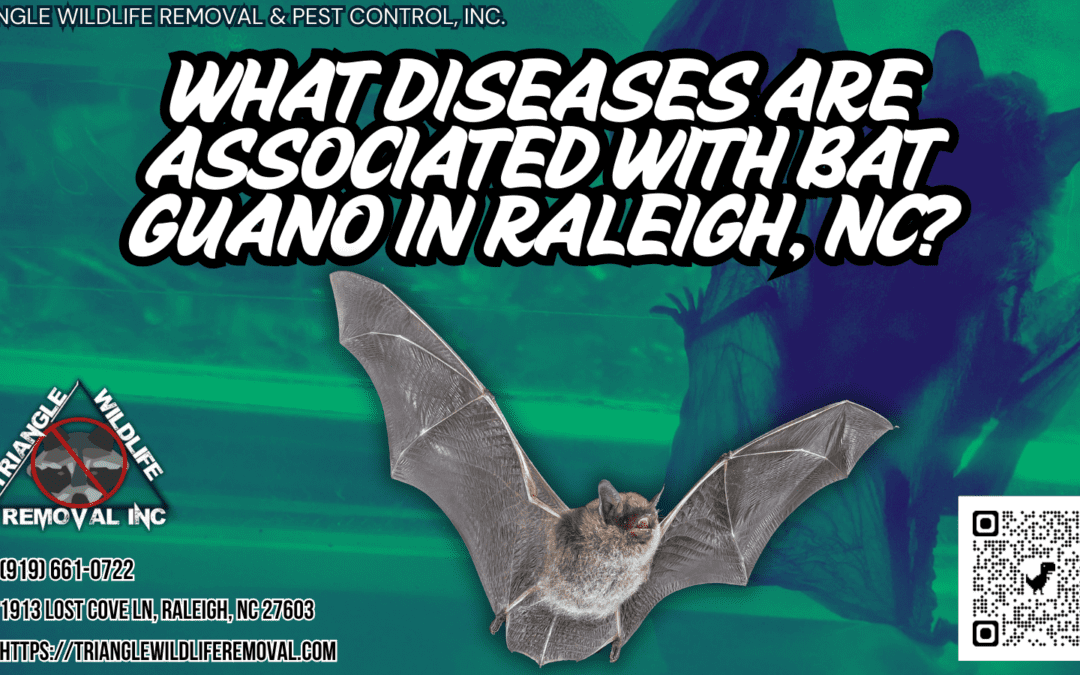Bat guano, the excrement of bats, may seem harmless, but it can actually be a potential source of various diseases. The presence of certain pathogens in bat guano can pose health risks to humans and animals alike. Histoplasmosis, Cryptococcosis, Salmonellosis, Hantavirus Pulmonary Syndrome, and Leptospirosis are some of the diseases associated with bat guano. These diseases can have severe consequences and should not be taken lightly. Understanding the potential risks and taking appropriate precautions is essential to safeguarding our health. But what exactly are these diseases and how do they relate to bat guano? Let’s explore further to uncover the hidden dangers that lie within.
Key Takeaways
- Histoplasmosis and Cryptococcosis are fungal infections associated with bat guano, primarily transmitted through inhaling spores.
- Salmonellosis is a bacterial infection caused by Salmonella bacteria in bat feces, and airborne transmission can occur when guano is disturbed.
- Hantavirus Pulmonary Syndrome is a severe respiratory illness caused by hantavirus exposure, commonly found in bat droppings, urine, and saliva.
- Leptospirosis is a bacterial infection contracted through exposure to contaminated water sources, with leptospira bacteria found in bat urine.
Histoplasmosis
Histoplasmosis is a fungal infection caused by inhaling spores from bat guano that can lead to severe respiratory symptoms in humans. Understanding the transmission and spread of histoplasmosis is crucial for implementing effective prevention methods, as well as recognizing the symptoms and providing appropriate treatment.
Histoplasmosis is primarily found in areas with large populations of bats, such as caves and old buildings. The fungus responsible for the infection, Histoplasma capsulatum, thrives in environments where bat droppings accumulate. When these droppings are disturbed, the spores become airborne, and can be easily inhaled by humans.
Prevention methods for histoplasmosis involve minimizing exposure to bat guano. This can be achieved by avoiding caves or other areas where bats reside, wearing protective equipment such as masks and gloves when working with bat droppings, and properly cleaning and disinfecting areas contaminated with bat guano.
Symptoms of histoplasmosis can vary from mild to severe, and may resemble those of a common respiratory infection. They include fever, cough, chest pain, fatigue, and difficulty breathing. In severe cases, the infection can spread to other organs, leading to complications. Prompt diagnosis and treatment are essential to prevent further complications.
Treatment for histoplasmosis typically involves antifungal medications, such as itraconazole or amphotericin B, depending on the severity of the infection. In severe cases, hospitalization may be necessary.
Cryptococcosis
Cryptococcosis is a fungal infection associated with bat guano that affects the respiratory system and can lead to serious complications in humans. This respiratory illness is caused by the fungus Cryptococcus, which is commonly found in bat droppings. When these droppings are disturbed, the fungal spores can become airborne and be inhaled by humans, leading to infection.
Here are some key points to understand about cryptococcosis:
- Inhalation of fungal spores: When bat guano is disturbed, the fungal spores can become aerosolized and easily inhaled, especially in enclosed spaces such as caves, attics, or abandoned buildings.
- Respiratory system involvement: Once inhaled, the fungal spores can colonize the lungs, causing symptoms such as cough, chest pain, and shortness of breath.
- Potential dissemination: In some cases, the infection can spread beyond the lungs to other organs, including the brain and spinal cord, leading to more severe complications.
- Immunocompromised individuals: People with weakened immune systems, such as those with HIV/AIDS or undergoing immunosuppressive therapy, are at higher risk of developing severe cryptococcosis.
- Treatment options: Antifungal medications are available to treat cryptococcosis, but prompt diagnosis and treatment are essential for a successful outcome.
It is important to take precautions and avoid exposure to bat guano to prevent the risk of cryptococcosis and other fungal infections associated with bat droppings.
Salmonellosis
Salmonellosis is a bacterial infection associated with bat guano that poses a risk to human health. This infection is caused by the Salmonella bacteria, commonly found in the feces of bats. When bat guano is disturbed or contaminated, the bacteria can become airborne, allowing for easy transmission to humans.
Prevention methods play a crucial role in reducing the risk of salmonellosis. Firstly, it is essential to avoid direct contact with bat guano, especially in enclosed spaces such as attics or caves where bats may roost. Wearing protective clothing, gloves, and masks when handling or cleaning areas with bat guano is highly recommended. Additionally, ensuring proper ventilation and maintaining cleanliness in areas prone to bat infestations can help minimize the risk of exposure.
If someone does contract salmonellosis, prompt treatment is necessary. The primary treatment for salmonellosis is fluid and electrolyte replacement to prevent dehydration caused by diarrhea and vomiting. Antibiotic therapy may be prescribed in severe cases or for individuals at higher risk, such as the elderly, young children, or those with weakened immune systems.
Hantavirus Pulmonary Syndrome
Bat guano can also pose a risk to human health through the transmission of Hantavirus Pulmonary Syndrome, a severe respiratory illness caused by exposure to the hantavirus. Hantavirus is primarily found in the droppings, urine, and saliva of infected rodents, including bats. Here are some important facts about Hantavirus Pulmonary Syndrome:
- Transmission: The hantavirus can be transmitted to humans when they come into contact with contaminated bat guano, either by inhaling dust particles or through direct contact with broken skin.
- Symptoms: The initial symptoms of Hantavirus Pulmonary Syndrome include fever, muscle aches, fatigue, and headaches. As the illness progresses, it can lead to severe respiratory distress, coughing, and shortness of breath.
- Severity: Hantavirus Pulmonary Syndrome can be life-threatening, with a mortality rate of around 38%. Prompt medical attention and supportive care are crucial for a better prognosis.
- Prevention: To prevent Hantavirus transmission, it is important to avoid contact with bat guano and other rodent droppings. This can be done by wearing protective clothing, using gloves and masks, and properly disposing of contaminated materials.
- Cleaning: If you need to clean an area contaminated with bat guano, it is recommended to wet the area with a disinfectant solution before removing the droppings to minimize the release of dust particles.
Leptospirosis
Leptospirosis is a bacterial infection that can be contracted by humans through exposure to contaminated water sources. It is caused by the bacteria of the genus Leptospira, which is commonly found in the urine of infected animals, including bats. Bats can contaminate water sources, such as ponds, lakes, and rivers, with their urine, leading to the transmission of Leptospira bacteria to humans.
Prevention methods play a crucial role in reducing the risk of leptospirosis. Avoiding contact with potentially contaminated water sources is essential. Individuals should refrain from swimming, wading, or participating in water-related activities in areas where bats are known to roost. Additionally, it is important to practice good hygiene, such as regular handwashing with soap and water, especially after being in environments where bats may be present.
Transmission routes for leptospirosis can also include direct contact with infected animals or their urine, as well as through broken skin or mucous membranes. Therefore, it is crucial to avoid handling bats or their droppings without proper protection, such as gloves and masks. In case of exposure, prompt medical attention is necessary to diagnose and treat the infection effectively.

